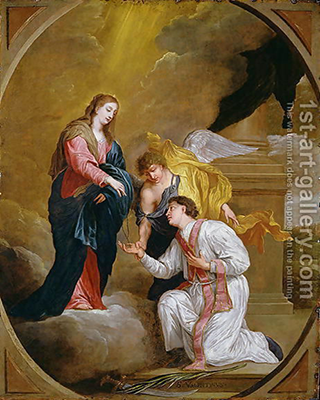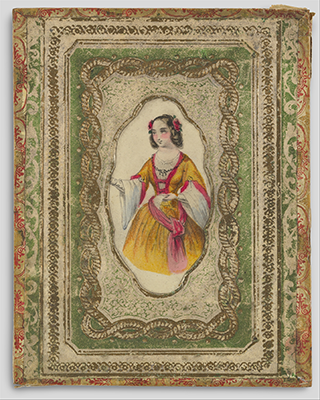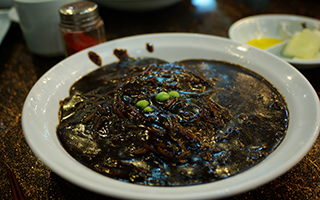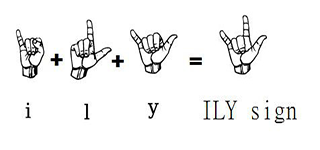World Traditions: Valentine's Day

Image Source: 1st Art Gallery
February 14th, 2017
February has long been celebrated as the month of romance. Valentine’s Day is commonly thought of as a day which commemorates Saint Valentine, a martyr who, according to legend, was killed for marrying Christian couples during the third century in Rome. The Catholic church in fact recognizes at least three – and up to eleven – saints bearing the name Valentine, or a variation of it. Valentine, from the Latin "Valens" (meaning powerful), and its variants were popular during the Roman era.
While some believe that Valentine’s Day marks the death of Saint Valentine, it may have been placed in the middle of February as an attempt to Christianise the pagan celebration of Lupercalia, which fell on February 15th. Lupercalia was a fertility festival dedicated to Faunus, the Roman god of agriculture.
Beginning in ancient Rome, Lupercalia began with priests gathering in a cave and sacrificing a goat and a dog. After the sacrifice, there would be a great feast. The hide of the sacrificed goat would be cut into strips, dipped in blood, and taken to the street. Women and crop fields would be gently struck with the strips of hide, which was supposed to render them fertile. Lupercalia was outlawed by the end of the 5th century. Pope Gelasius I declared that Valentine’s Day be celebrated February 14th instead. The feast of Saint Valentine was to become a Fest of the Purification.
Geoffrey Chaucer’s Parliament of Fowls contains the earliest surviving written record to portray Saint Valentine’s Day as a day for romance.

Image Source: MET
For this was on seynt Valentynes day,
Whan every foul cometh ther to chese his make.
(For this was Saint Valentine’s Day,
when all the birds of every kind that men can imagine come to choose their mates).
The poem was likely written in the late 1370’s, or perhaps as late as 1383. Chaucer was known to compile stories from other sources, and may have embellished Saint Valentine’s historical role.
Today, Valentine’s Day is celebrated on February 14th in Canada, the United States, Mexico, the United Kingdom, France, and Australia. On this day, people give flowers, candies, and gifts with their loved ones. School children exchange Valentine’s Day cards. For romantic couples, typically men give chocolates and roses to their love interest. Restaurants are often booked weeks in advance for the special occasion. In many places, celebrating Valentine’s Day is forbidden or controversial and as a result, many countries do not celebrate the occasion.
Here is a look at how Valentine’s Day is celebrated around the world.
Valentine’s Day in Mexico
In pre-Columbian times, Mexicans considered friendship a precious gift of life. On February 14th, Mexico celebrates El Día de San Valentín with candy and balloons much like the rest of North America. In Mexico, however, it is popularly known as El Día del Amor y la Amistad (the day of love and friendship), placing a special emphasis on not just romantic love, but friendship as well.
Valentine’s Day in Japan

Image Source: Flickr / www.proflowers.com
Valentine’s Day was introduced to Japan in 1936 through a misunderstanding. An executive with the chocolate company Morozoff understood the custom to mean women give men gifts, rather than the opposite. As a result, women are expected to gift men with chocolates. There are two types of chocolates given. Giri-choco ("obligation chocolates") are given to friends. Honmei-choco ("true feeling chocolate") is given to a boyfriend or husband. These are often more expensive, finer chocolate, or are made by hand by the gifter. Men are supposed to return gifts to women on "White Day" (March 14th). Most often, the colour of the chocolate is white. Flowers, candies, and other gifts may also be given.
Valentine’s Day in Korea

Image Source: Egg TM
Much like Japan, Valentine’s Day in Korea is marked by women gifting men on February 14th. March 14th is known as "White Day", during which women receive gifts from men. In addition, Korean’s may celebrate Black Day on April 14th. On this day, single people get together with friends and eat bowls of black noodles. Jajang myeon, (Jajang: Black bean paste sauce, and Myeon: noodles) are consumed and participants may also dress in black, with black nail polish and accessories.
Valentine’s Day in Guatemala
In Guatemala, El Día del Cariño (“The Day of Affection”) is more about fondness for friends and colleagues than for romantic interests, as it is elsewhere. On February 14th, Guatemalans exchange flowers, gifts, and cards. Elderly people march in the Old Love Parade in which people dress up in feathered masks and traditional Mayan attire.
Valentine’s Day in Thailand
On Valentine’s Day in Thailand, superstitious couples choose the day to register their marriages, especially in Bangkok’s Bang Rak neighbourhood, as its name means 'Village of Love'. Because the Buddhist holiday Makha Bucha Day is also on Valentine’s Day, government offices would typically be closed. But because the day is so popular for marriage, they remain open.
"I Love You" in other languages

Aku cinta kamu (Indonesian)
Minä rakastan sinua! (Finnish)
我愛你! (Chinese)
Je t’aime! (French)
愛してる!(Japanese)
Ti amo! (Italian)
Jag älskar dig (Swedish)
Te amo! (Spanish)
Ich liebe dich! (German)
Seni seviyorum (Turkish)
أحبك(Arabic)
Anh yêu em (Vietnamese)
ABOUT THIS PAGE
Psiphon Today is brought to you by Psiphon Inc. Please visit our Privacy Policy, and find out how you can contact us.


